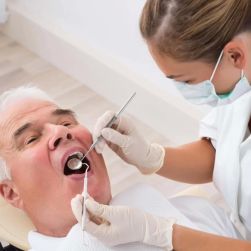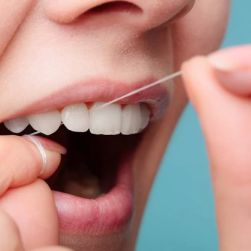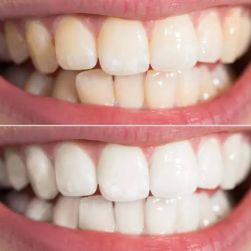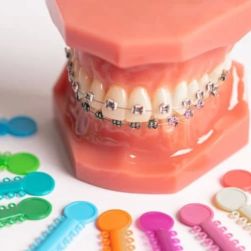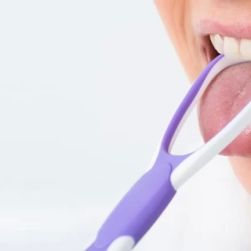Pediatric Dental Checkups: What to Expect for Your Child's First Visit
As a parent, I know how important it is to ensure that my child’s health is on track. When it comes to dental health, pediatric dental checkups play a crucial role in not only preventing cavities but also in helping children establish healthy oral hygiene habits that will last a lifetime. My first experience taking my child to the dentist was filled with questions and curiosity. What should I expect? Will my child be scared? What exactly happens during a pediatric dental checkup?
In this article, I’ll walk you through what happens during a typical pediatric dental checkup, and provide helpful tips to make the experience as smooth and stress-free as possible. Whether it’s your child’s first visit or just another regular checkup, understanding the process can help ease any anxiety for both you and your little one. Let’s dive in!
1. The Importance of Regular Pediatric Dental Checkups
When I first took my child to the pediatric dentist, I didn’t realize how important those early dental visits really were. According to the American Academy of Pediatric Dentistry, a child’s first dental visit should occur within six months of their first tooth eruption, or by their first birthday. Early dental visits are essential in establishing a foundation for good oral health.
These checkups help identify potential issues early, such as cavities, gum disease, and misalignment of teeth. Additionally, the dentist can offer valuable advice on teething, thumb-sucking, and the use of pacifiers, which can all affect a child’s oral health. Regular checkups allow the dentist to monitor the development of your child’s teeth and provide preventative care, like fluoride treatments and dental cleanings, which are vital to maintaining healthy teeth and gums.
2. Preparing Your Child for Their First Visit
When my child was about to have his first dental visit, I made sure to prepare him mentally for the experience. Children, especially younger ones, can be anxious about new experiences. The best way to help your child is to keep things positive and calm. I found that talking about the visit ahead of time helped reduce any nervousness. I explained that the dentist is a friendly person who helps keep our teeth clean and healthy.
It also helps to role-play before the visit. For example, I played dentist with my child, letting him “check” my teeth and then pretend to let me check his. This helped normalize the process and made it feel like a fun game rather than something to fear. There are also many children’s books and videos about going to the dentist that can help explain the process in a fun and age-appropriate way.
3. What to Expect During the Dental Checkup
On the day of the checkup, I walked in with my child, and the pediatric dental office was designed to make him feel at ease. Pediatric dentists specialize in working with children, and their offices are usually colorful, fun, and welcoming, with toys and books available in the waiting area. This kind of environment made my child feel much more relaxed.
Once in the exam room, the dentist or dental hygienist will typically start by reviewing your child’s medical history and any concerns you may have. They’ll ask about your child’s diet, habits (like thumb-sucking or bottle-feeding), and oral hygiene routine. This is a great opportunity to ask the dentist for tips on brushing techniques and when to start flossing.
The actual dental exam is usually quick and straightforward. For young children, the dentist will typically use a small, gentle toothbrush and special tools to clean your child’s teeth. The hygienist may also apply fluoride treatments, which are designed to strengthen the teeth and prevent cavities. I was surprised by how gentle the process was, and my child barely seemed to notice the cleaning.
4. X-Rays and Diagnostic Tools
Depending on your child’s age and the dentist’s recommendation, your child might need to have X-rays taken during their dental checkup. For younger children, this may not be necessary, but if your child has a history of cavities or if the dentist is monitoring the development of their teeth, X-rays may be taken to check for cavities between teeth or to assess the growth of permanent teeth. The X-ray process is quick and painless, and the pediatric dentist ensures that your child is as comfortable as possible throughout the process.
In addition to X-rays, some pediatric dental offices use tools like digital imaging or intraoral cameras, which can help provide a clearer picture of the health of your child’s teeth. The dentist will explain any findings to you and offer recommendations based on the results. I found that this level of transparency helped me feel more involved and reassured me that my child’s dental care was in good hands.
5. Fluoride Treatments and Sealants
One of the most valuable parts of a pediatric dental checkup is the fluoride treatment. Fluoride helps to strengthen the enamel, the outer layer of the teeth, and protect against cavities. For children who are at higher risk of cavities, the dentist may recommend fluoride varnish or gel treatments as part of the checkup.
In addition to fluoride treatments, your pediatric dentist may also suggest dental sealants. Dental sealants are a thin, protective coating that is applied to the grooves of the back teeth, which are more prone to cavities. This is especially beneficial for children who are still learning to brush thoroughly. I was relieved to learn that sealants are painless and can provide long-lasting protection against cavities in areas that are hard to clean.
6. Creating a Positive Experience for Future Visits
Making dental checkups a positive experience for your child is essential for encouraging good oral hygiene habits in the future. After the visit, I made sure to praise my child for being brave and cooperative. Many pediatric dentists offer small rewards, like stickers or a “good job” certificate, to celebrate a successful checkup. This positive reinforcement helps build your child’s confidence and makes them look forward to their next visit.
To keep your child engaged in their oral care, continue the conversation about how important it is to brush and floss every day. I’ve found that setting up a fun brushing routine with rewards for keeping their teeth clean between visits helps instill lifelong habits that protect your child’s teeth and gums.
7. When to Schedule Your Child’s Next Checkup
Typically, pediatric dentists recommend that children have checkups every six months, just like adults. However, if your child has specific dental issues, such as cavities, misalignment, or teeth grinding, the dentist might recommend more frequent visits. The dentist will advise you on the best schedule based on your child’s needs. After every checkup, I always leave the office with a reminder of when to schedule the next one so that we stay on top of our dental care.
Pediatric dental checkups are a vital part of keeping your child’s teeth healthy and strong. By preparing your child ahead of time and knowing what to expect, you can ensure that the experience is smooth and enjoyable for everyone. Regular visits not only help prevent future dental problems but also teach children the importance of maintaining good oral hygiene throughout their lives.
SEO Title: Pediatric Dental Checkups: What to Expect During Your Child's Visit
SEO Keywords: pediatric dental checkups, children’s first dental visit, pediatric dentist tips, fluoride treatments for kids, dental checkup for kids, healthy teeth for children
SEO Description: Wondering what to expect at your child’s first pediatric dental checkup? Learn about the process, including exams, X-rays, fluoride treatments, and how to prepare your child for a positive experience.

